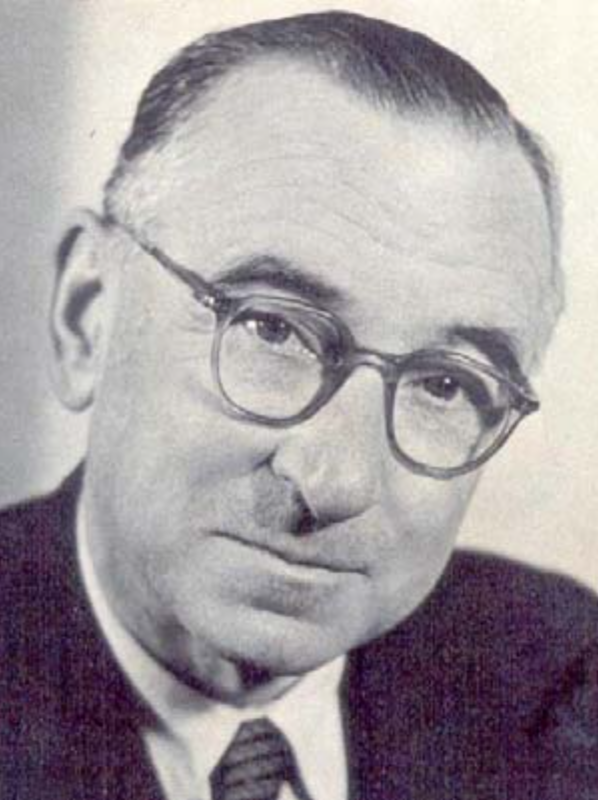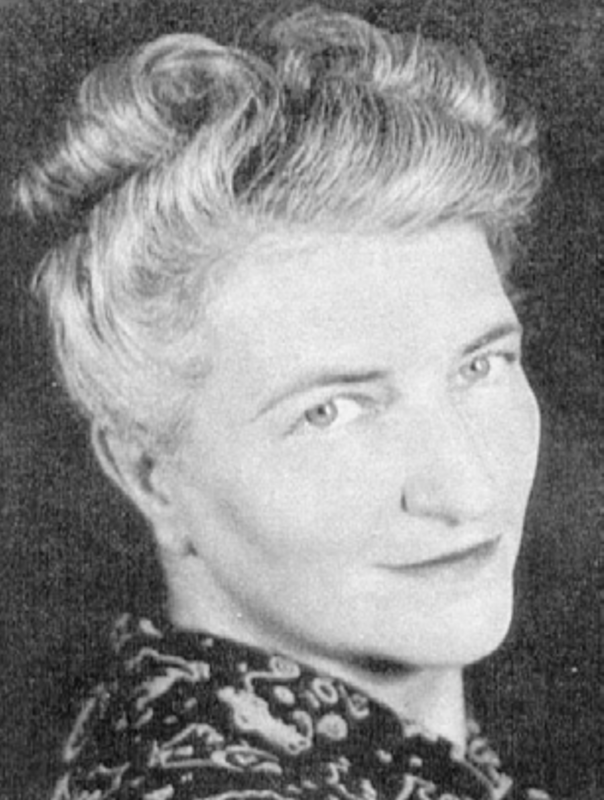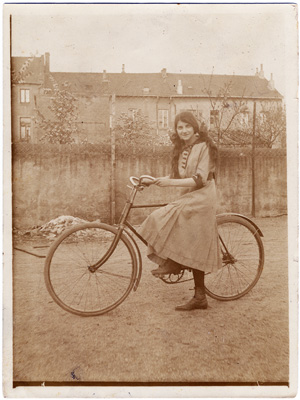Ludwig and Thea Bamberger
Author: Manfred Brösamle- Lambrecht

 https://commons.wikimedia.org/wiki/File:Ludwig_bamberger_1893-1964.png
https://commons.wikimedia.org/wiki/File:Ludwig_bamberger_1893-1964.pngLudwig Bamberger, about 1948
 https://commons.wikimedia.org/wiki/File:Thea_bamberger_nee_spier_1898-1990.png
https://commons.wikimedia.org/wiki/File:Thea_bamberger_nee_spier_1898-1990.pngThea Bamberger, née Spier, about 1948
Youth
 https://commons.wikimedia.org/wiki/File:Bamberger_ludwig_otto_hugo_anton.png
https://commons.wikimedia.org/wiki/File:Bamberger_ludwig_otto_hugo_anton.pngLudwig was born on 5 September 1893 as the youngest of four sons of Philipp and Serry Bamberger. The course was set early on for him to become a businessman and entrepreneur: He grew up in his parents' household right next door to the David Bamberger family business, and he must have been familiar with the interrelationships and processes in the company even as a youngster. After training as a businessman in Nuremberg until 1911, he worked for three years in England for companies that had business contacts with the family business in Lichtenfels. Probably also because of his profound knowledge of English, he was deployed in a telecommunications unit on the Western Front during the First World War and survived several combat missions in Flanders despite being wounded. After the war, Ludwig joined the family business in Lichtenfels in a responsible position.
Photo: Ludwig Bamberger (on the left) with his brothers Otto, Hugo and Anton 1908
 https://holocaustarchives.cofc.edu/panels/bamberger/photo10.html
https://holocaustarchives.cofc.edu/panels/bamberger/photo10.htmlThea Spier (1898-1990) was the youngest of three children of the Frankfurt shoe manufacturer Simon (Shimon) Spier and his wife Bertha Spier, née Kaufmann. Thea was a very musically gifted and educated young lady, studied piano and singing and was probably a member of the Frankfurt Opera Chorus. Thea Spier (1898-1990) was the youngest of three children of the Frankfurt shoe manufacturer Simon (Shimon) Spier and his wife Bertha Spier, née Kaufmann. Thea was a very musically gifted and educated young lady, studied piano and singing and was probably a member of the Frankfurt opera choir. The Spier and Bamberger families were already good friends in their parents' generation, and Ludwig got to know Thea through her brother Selmar, with whom he often went hiking.
Photo: Thea Spier, date unknown
Family
 © Manfred Brösamle-Lambrecht
© Manfred Brösamle-LambrechtLudwig and Thea married in 1922 and moved into a newly built prestigious house at Bamberger Strasse 44 (renumbered Bamberger Strasse 15 from 1937) in the immediate neighbourhood of the company buildings. It stood in the second row until Ludwig had the former "Pabstsche" house in front of it, which stood directly on the street and was owned by the D. Bamberger company, demolished in 1932 in order to enlarge the garden for the children. The couple had two daughters: Anna Margareta (1923-2019), later married to Karesh, and Eva (1927-2019), later married to Edelstein - both were highly talented artists. In order to provide them with an appropriate education and protect them from the anti-Semitic hostility in Lichtenfels, Annegret was sent to a boarding school in Switzerland in 1936 and Eva to a boarding school in Italy in 1938.
Photo (2024): The villa of the family Bamberger in the Bamberger Straße 44 (today 15), built 1922/1923
Timely escape by emigrating to England
Ludwig took early steps to escape the Nazis and applied to immigrate to England, where he had had close ties since his youth. While the couple were travelling in the USA in 1938, news reached them that England was prepared to accept them and they managed to travel there without having to take the dangerous but mandatory diversions via Germany. In October 1938, they were de-registered in Lichtenfels with London as their destination. The family did not witness the looting of their house and all the art treasures and books they had collected there during the November pogroms. Klaus Bamberger's account that his uncle was at the mercy of the Nazi mob on the street contradicts the records.
During the November pogrom, the Nazi mob threw many of the valuable books onto the street. The Nazi mayor Wilhelm Krautheim claimed the house as his personal residence, and art objects and furniture were stored in boxes in the town hall cellar without any awareness of their value.
The fate of the art collection and the library
Like his eldest brother Otto, Ludwig was a passionate collector of German Expressionist drawings and paintings. Anna Bamberger Karesh recalled that one of Emil Nolde's famous watercolours of fish hung in her parents' dining room, and an oil painting of bathers around a pool by Erich Heckel in the bedroom. Ludwig Bamberger also owned an exquisite library and valuable furniture from the Baroque period and the Bauhaus workshops. By a stroke of luck and with great effort, the family regained at least a small part of their art treasures: Gerald Bamberger, son of Anton Bamberger, also came to Lichtenfels immediately after the war as an American occupation officer, discovered boxes containing Ludwig and Thea Bamberger's possessions in the cellar of the town hall and immediately secured them. After lengthy enquiries, including with the Knorr & Friedrich company, which had taken over the D. Bamberger company in 1938 as part of the Aryanisation process, he got some of the valuable pieces of furniture back. To his great delight, the drawers of an antique desk still contained parts of his art collection: works by Otto Müller, Erich Heckel, Otto Dix, Max Pechstein, Lionel Feininger, Käthe Kollwitz, Max Beckmann, Ernst Ludwig Kirchner and Emil Nolde, even originals by Henri Matisse.
Establishment of a new existence in England, later in the USA
In London, Ludwig found work as a director for a former business friend who produced toys in a north-west London suburb. After the outbreak of the World War, however, the Bambergers were interned separately for months on the Isle of Man as "enemy aliens"; only Anne was allowed to stay in the business friend's household, Eva lived in the camp with her mother. After being released from internment, the family was able to build a new life in Mill Hill, the business friend's home and company headquarters. In 1946, their daughter Anne married the American soldier Karl Karesh and moved with him to his home in Charleston, South Carolina. Ludwig, Thea and Eva followed them in 1949. Ludwig founded a small mail order business. In 1964, Ludwig died of a heart attack at the age of 71. His wife Thea lived in the house they shared until her death at the age of 92.
